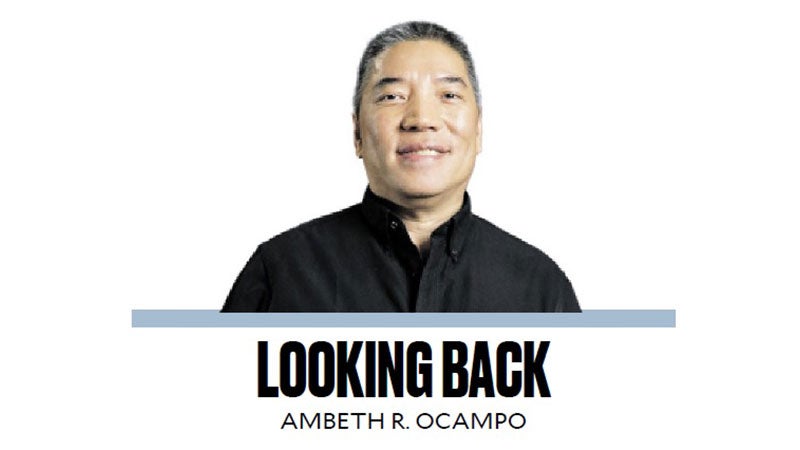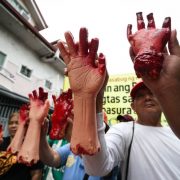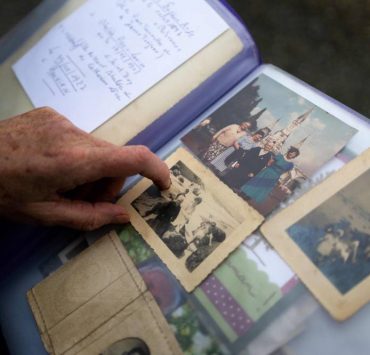‘Oplan Tuli’

Philippine summers are associated with other things aside from heat: mangoes and siniguelas, roadside halo-halo and mais con hielo stands, the rites of Holy Week, the Santacruzan and Flores de Mayo, last but not least, the much-anticipated break between academic school terms. The generation before mine called it “bakasyon grande.” My generation referred to it in English as the “long vacation” or simply “summer vacation.” With the change in the academic calendar, this break was moved from April and May to June and July so it could not be called “summer” anymore. In my university, we refer to it as the “intersession.”
One of the traditional summer rites for boys was circumcision, I still see street signs in local governments and barangays offering free circumcision during “Operation Tuli.” Despite compelling medical evidence that circumcision is not necessary, tradition is hard to break and any uncircumcised Filipino boy is the subject of ridicule and bullying by the circumcised majority. Aside from the argument for personal cleanliness, many Filipinos believe that circumcision is an aid to growth in height (not length). Circumcision is part of our Catholic and Muslim tradition. Before the renovation of the Roman Catholic Calendar, Jan. 1 used to be the Feast of the Circumcision of Our Lord before it was replaced with the Solemnity of Mary Mother of God. In the past, babies baptized or born on Jan. 1 were given the name Circumcision, some religious chose the feast as their saints’ day so in the index to the 55-volume compilation of documents, “The Philippine Islands,” you will find a Recollect named Jose de la Circumcision.
In late 16th-century Spanish accounts of the Philippines, you find references to circumcision. Miguel Lopez de Legazpi, first Spanish governor general when describing “heathens and Moros” said of the latter: “They have little knowledge of the law that they profess beyond practicing circumcision and refraining from pork.” In 1582, Miguel de Loarca said circumcision was practiced “for health and cleanliness.” Domingo de Salazar, bishop of Manila, wrote a letter to Philip II in 1588 reporting on Muslims erecting mosques and circumcising boys. Other accounts suggest that circumcision was a pre-Spanish custom in the Philippines.
Until I can find something older, the first treatise on circumcision in the Philippines in English is by Lt. Charles Norton Barney of the United States Army medical department who was stationed in Bulacan from 1899 to 1900. In 1903, Barney published “Circumcision and Flagellation Among the Filipinos” in the Journal of the Association of Military Surgeons, making him an authority on the subject.
Barney noted that this ancient Filipino custom traces its roots to Muslim tradition where males are circumcised in a religious ceremony that made them eligible for marriage. What he could not understand was the connection with Catholicism saying: “Neither is it among them done on any account of cleanliness but from custom and disinclination to be ridiculed. The friars were not able to root out the custom as it was an ugly subject to treat from the pulpit.”
Barney added that “being uncircumcised is looked upon as a defect, so much so that children of both sexes cruelly taunt the uncircumcised. They apply to them, with intent to insult, the term ‘suput’ which originally meant constricted or tight but has come to mean one who cannot easily gain entrance in sexual intercourse.” I always knew, depending on context and pronunciation, supot/suput can mean a paper or plastic bag, an uncircumcised man, or a firecracker that does not go off. Dictionaries simply define “suput” as uncircumcised. And don’t get me started on old dictionaries because it shows you how the meanings of words have changed over time. Take “bakla,” that one dictionary defined as a “womanish man or hermaphrodite.” In colloquial, it can mean “gay” or “homosexual.” But in the past, bakla was a word that meant “confused” thus in the old Pasyon when Christ agonized in the Garden of Gethsemane about the cruel and inhuman way he would be put to death, he is described by the text as “nabakla.”
The funniest part of Barney’s article documents that “When American troops first came to Hagonoy, [Bulacan,] and bathed in the river, the fact that they were uncircumcised was a subject of great gossip in the market place.” When I was researching about the carabaos charging at American soldiers during military encounters with Filipinos, it was believed that carabaos didn’t like the dark blue uniforms of the enemy, and that carabaos got enraged by the bad smell of the enemy soldiers because they were uncircumcised.In 1697, British adventurer William Dampier was invited to the circumcision ceremony of the son of a certain Raja Laut. He was told that there had been no circumcision in years because a general circumcision was only held when a sultan, a general, raja, or some other VIP had an 11- or 12-year-old son fit for circumcision. This rite was followed by days of feasting.
Next time you see a tarpaulin or social media post advertising “Oplan Tuli,” remember it goes a long way back in history.
Ambeth is a Public Historian whose research covers 19th century Philippines: its art, culture, and the people who figure in the birth of the nation. Professor and former Chair, Department of History, Ateneo de Manila University, he writes a widely-read editorial page column for the Philippine Daily Inquirer, and has published over 30 books—the most recent being: Martial Law: Looking Back 15 (Anvil, 2021) and Yaman: History and Heritage in Philippine Money (Bangko Sentral ng Pilipinas, 2021).

















